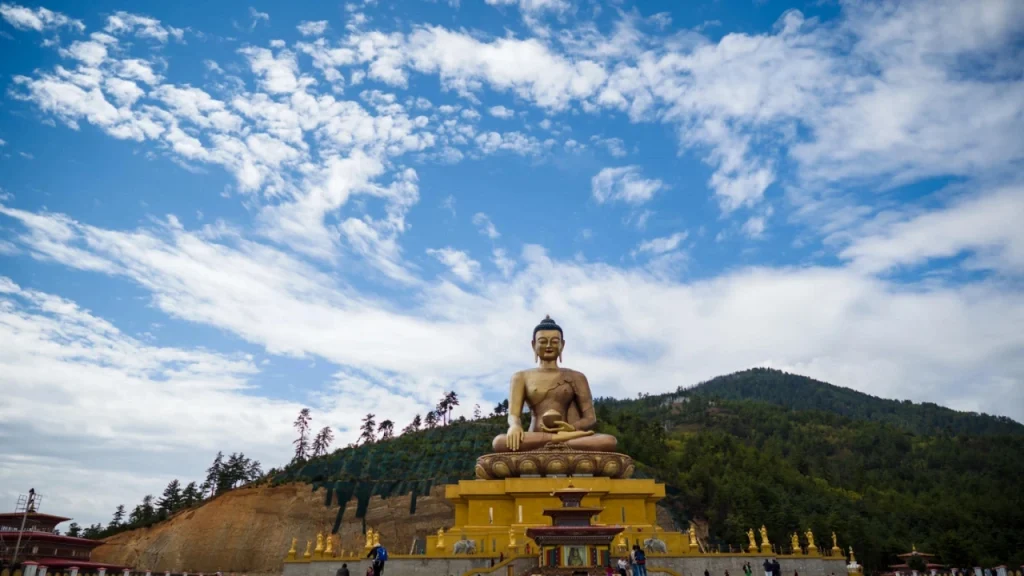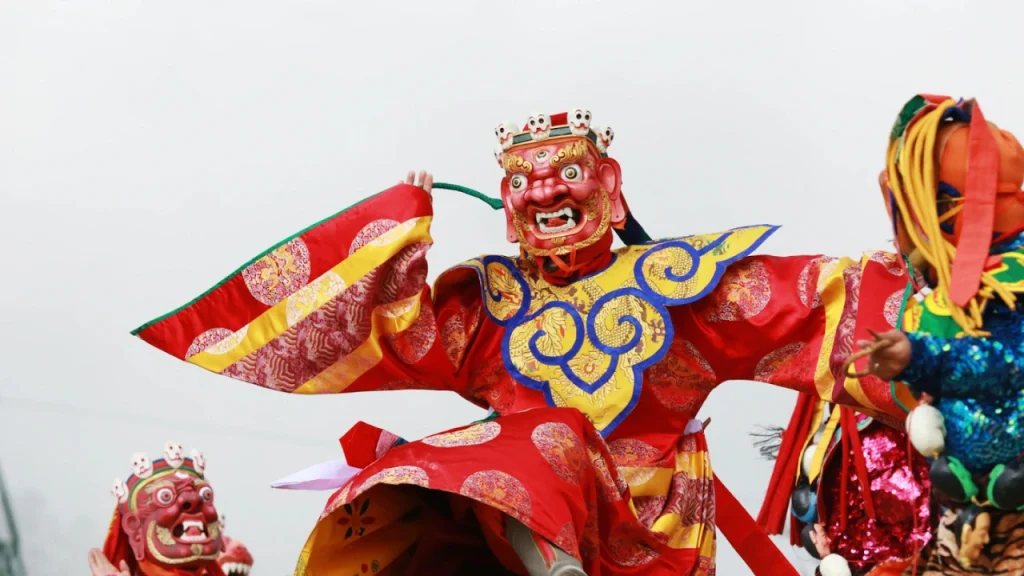Nestled in the eastern Himalayas, the kingdom of Bhutan is a land of breathtaking landscapes, vibrant culture, and a unique approach to measuring prosperity. Known as the “Land of the Thunder Dragon,” it has managed to preserve its traditional way of life while embracing sustainable development and environmental conservation. This small landlocked nation, with its rich history and enchanting traditions, offers visitors a glimpse into a world untouched by the frenetic pace of modernity. From its stunning monasteries perched on mountain cliffs to its vast network of pristine hiking trails, Bhutan beckons adventurers, cultural enthusiasts, and seekers of tranquility alike. In this guide, we will delve into everything you need to know about it, its history, culture, natural beauty, and the principles that make it truly unique.
History of Bhutan
Bhutan is a Buddhist kingdom in South Asia, surrounded by mountains and located between China and India. It is often called the “Land of the Thunder Dragon” and is known for its stunning monasteries, beautiful landscapes, and impressive fortresses. The tourism industry in Bhutan is controlled by the government, which means travel is limited to pre-arranged packages and guided tours. If you’re planning to visit Bhutan, this article will provide you with all the necessary information. It takes pride in preserving its unique culture, and traditional arts and crafts are still practiced in the same way as they were many years ago. The country’s art, culture, drama, music, and social values are deeply influenced by Buddhism. The people of Bhutan are known for their strength, independence, and great sense of humor. Men and women are treated equally, and there is a sense of fairness and equality. Bhutan has been recognized as the happiest country in Asia. Bhutan, a land with a rich history, has stood as a unique nation throughout the ages, never succumbing to external powers. For centuries, it remained veiled in mystery, shielded from the rest of the world. In 747 A.D., Guru Padmasambhava introduced Buddhism to Bhutan, arriving on the back of a tiger. He conquered the demon spirits hindering the faith’s spread, leaving his imprints on solid rocks and a cypress tree that sprouted from his staff. Over time, Bhutan developed its own religious practices, particularly the Drukpa sect of Kagyupa, which became the country’s official Bhutan religion.
Bhutan’s consolidation as a nation began in 1616 when Ngawanag Namgyal, a lama from western Tibet, defeated three Tibetan invasions and established himself as a ruler. However, civil unrest and internal conflicts weakened Bhutan for the next two centuries. In the 18th century, as the power of the Mughal Empire declined, Bhutan’s influence grew in the region near Cooch Behar, gaining substantial control by 1772. By 1826, Bhutan had extended its control over the passes into Assam. The monarchy of Bhutan was formalized through ties with British India. Ugyen Wangchuck initiated relations, and in 1907, he was elected as the hereditary ruler and head of state. The Treaty of Punakha, signed in 1910, ensured non-interference in Bhutan’s internal affairs by British India. Successors like Jigme Wangchuck and Jigme Dorji Wangchuck further developed Bhutan, establishing institutions and guiding the country’s growth. Jigme Singye Wangchuck, who ascended the throne in 1972, focused on modern education, hydroelectricity, decentralization of governance, and rural development, becoming renowned for his philosophy of “gross national happiness.” In 2007, Bhutan held its first parliamentary elections, marking a significant milestone in its political evolution. Throughout its remarkable journey, Bhutan has maintained its independence and unique identity, preserving its culture and religious practices. It stands as a testament to a nation that has charted its own course while embracing aspects of modernity and global engagement.
Culture of Bhutan

Bhutan’s culture is deeply rooted in its ancient traditions, thanks to its protected location amidst the Himalayas. Despite having a small population of around 700,000, Bhutan boasts a diverse range of 19 different dialects and numerous spoken Bhutan language. The country’s traditional culture thrives through its vibrant performing arts, including dance and music, which play an integral role in ceremonies and festivals. The arts and crafts of Bhutan are practiced in the same way as they have been for centuries, keeping the rich heritage alive. The essence of Buddhism is intertwined with the art, culture, drama, music, and social values of the Bhutanese people. Buddhism’s influence is evident in daily life, with numerous monasteries, stupas, prayer Bhutan flag, and prayer wheels creating a strong infrastructure and a spiritual atmosphere.
Monks hold a significant position in the community and are respected by all. They play an important role in blessing important occasions, and in the past, it was common for at least one son from each family to enter the monastic order. Bhutan’s indigenous weaving methods have gained recognition and appreciation from users, collectors, and textile experts worldwide, showcasing the country’s skilled craftsmanship. Bhutan’s culture is a blend of ancient traditions and the influence of Buddhism, with performing arts, traditional crafts, and the esteemed role of monks contributing to the richness and uniqueness of Bhutanese culture.
Bhutan People

The Bhutan population descended from Tibetan immigrants in the 9th century, is the largest and dominates the northern, western, and central regions of Bhutan. They speak a variety of Tibeto-Burman languages, with Dzongkha being the official language. The Nepalese group, including the Gurung ethnic group, makes up around one-third of the population and settled in the southwestern and southern parts of Bhutan. They primarily speak Nepali. The Sharchop people considered the earliest inhabitants of Bhutan, are ethnically related to hill tribes in neighboring areas of Assam and Arunachal Pradesh.
Buddhism is the main religion followed by the majority of Bhutan’s population, while Hinduism is practiced by a significant portion. Bhutanese people are known for their physical strength, independence, and sense of humor. Hospitality is highly valued, and traditional clothing worn by both men and women is vibrant and colorful. The class system is not rigid, and social and educational opportunities are not affected by one’s birth or rank. Women have equal rights to men, and both genders work together in fields and household management.
The population of Bhutan is predominantly young, with a significant proportion under the age of 30. Birth and death rates in the country are below the global average. The staple foods include red rice, maize, buckwheat, yak meat, chicken, pork, beef, and lamb. Soups and stews with meat, rice, lentils, and dried vegetables are popular, particularly during the winter season. Football is the most popular sport in Bhutan, while archery holds the status of the national sport. The crime rate in Bhutan is low, making it a safe place to visit. Respecting customs and etiquette, especially while visiting monasteries and stupas, is important in Bhutan. As a country with over 70% forest coverage, Bhutan is the first carbon-negative country in the world. Travellers are advised to follow basic etiquette, such as removing shoes before entering temples, dressing modestly, and refraining from pointing fingers or throwing objects in water bodies considered sacred by the Bhutanese people.

Bhutan capital, nestled within the Himalayas, is a culturally rich and unique country that has preserved its ancient traditions and diverse heritage. With three major ethnic groups, including the Bhutia, Nepalese, and Sharchop, Bhutan showcases linguistic and cultural diversity. Influenced by Buddhism, the country’s vibrant culture is reflected in its traditional arts, performing arts, and craftsmanship. Bhutan’s society values hospitality, gender equality, and a strong sense of community. With its young population and low crime rates, Bhutan offers a safe and welcoming environment for visitors. The country’s commitment to environmental sustainability, as the world’s first carbon-negative nation, further enhances its appeal. To fully appreciate Bhutan’s beauty, visitors are encouraged to respect local customs and etiquette, particularly when visiting religious sites and natural landmarks. Exploring monasteries, participating in festivals, and immersing oneself in Bhutan’s breathtaking landscapes promise an unforgettable and enriching experience. Bhutan tourism, with its awe-inspiring landscapes and deep-rooted cultural heritage, stands as a testament to the harmonious coexistence of tradition and progress. Throughout this exploration of Bhutan, we have discovered a country that values the well-being of its citizens above all else, as evidenced by its commitment to Gross National Happiness. This guiding principle, coupled with Bhutan’s dedication to environmental preservation, has helped shape a nation that cherishes its cultural identity while embracing sustainable development. From the sacred monasteries and dzongs to the pristine mountain trails and festivals that celebrate the country’s rich heritage, Bhutan travel offers a world of wonders to explore. As we bid farewell to this mystical kingdom, let us carry the spirit of Bhutan within us—a reminder to seek balance, harmony, and contentment in our own lives.